
Presentations In 2011
NOTE: Many of the following presentation summaries will include links to the Power Point slides used to illustrate the presentation.
Click HERE for instructions on how to control the slide show.
Click Top of Page above to return to 2011 index
Vol 88 No 1 - January 3, 2011
Integrated Pest Management in Schools - Bed Bug Issue
Presented By: John Carter

John Carter
Pest management is a process consisting of education, communication and cooperation along with physical and mechanical control of the environment. Pesticide use cannot be totally eliminated, but we were able to reduce pesticide use by 90% and pest complaints by 80%. This management plan resulted in cleaner, tighter buildings, fewer pests, and less pesticide exposure.
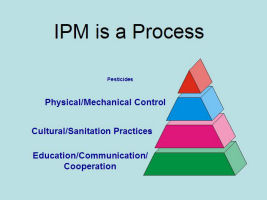
Integrated Pest
Management
Pests need food, water and shelter. Eliminate the leaking roof, faucet, or drain pipe. Clean desk drawers, file drawers, closets, and store food and snacks properly.
Bed bugs all but disappeared in developed countries, particularly with the widespread use of DDT during the 1940s and 1950s. Why are we having a problem now? Increased international travel from areas where the bed bug was never eradicated and dependence on pesticides likely contributed to this phenomenon. Certain chemical pesticides did, temporarily, control these pests for the past four decades; however, bedbugs have developed resistance to many of the chemical pesticides currently used.

Male Bed Bug
Bed bug infestation is not considered a public health hazard since the bugs do not infest people but are nest parasites and only feed off humans. This limits actions that can be taken such as entering people's homes to eradicate infestations.
Click HERE to view the Power Point slides used in this talk for Integrated Pest Management
Click HERE to view the Power Point slides used in this talk for information on bed bugs
Notes by Charles Hamm
Vol 88 No 2 - January 10, 2011
Aviation of Earlier Days
Pictorial Presentation and Commentary on Significant Events
in Aviation Prior to the Jet Age
Presented By: Dr. Arthur Freeman
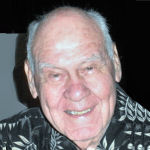
Dr. Art Freeman
Dr. Freeman's lecture consisted of a series of pictures of earlier airplanes, aviators and interesting histories of the planes. He started the talk showing the plane of the Wright brothers built in 1908. In 1911, the first airboat was built and it flew between St. Petersburg and Tampa, Florida. It transported a passenger and was considered as the first airline in the United States.
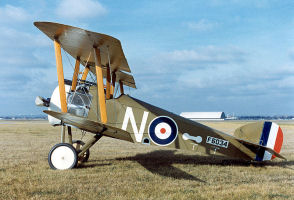
Sopwith Camel
When the United States entered World War I, the country had not yet developed an aircraft industry and American airmen were flying planes made in England and France. Eddie Rickenbacher, leader of the American Hat in the Ring Squadron, had 26 kills of German planes but this was much less than the leading aces from France, England, and especially Germany. Early in the war, fighter planes were equipped with a machine gun mounted on top of the wing to avoid shooting through the propeller. Later an interrupter gear was developed to enable the guns to fire straight ahead through the propeller. One of the most successful fighter planes was the British Sopwith Camel, a design that was credited for shooting down 1,294 enemy planes, more than any other Allied fighter in the war.
In 1914 wooden planks were built on top of the battleship Pennsylvania as a deck for landing airplanes. It was the prototype of future air craft carriers. At that times planes had open cockpits and pilots had to wear heavy flight suits because of the cold.
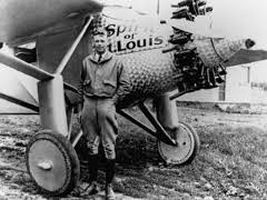
Charles Lindbergh
A picture of Charles Linbergh and his wife was presented. Lindberg was famous for completing the first solo non-stop flight across the Atlantic in 33 hours in 1927. Also shown were pictures of his heated flying suits used for his flight from Alaska, over North Pole and on to China and the Yangtze River. He was sympathetic to Hitler's desire for German re-armament but became a patriotic hero after Pearl Harbor. He consulted for the U. S. Air Force. Photos of pilots and their planes used for air mail service were also shown.
In 1929 Jimmy Dolittle became the first pilot who flew a plane using instruments only. He later became the commander of a special B-25 squadron especially outfitted to fly from the carrier Hornet to bomb Tokyo, Japan, during the dark days after Pearl Harbor.

Flying Tiger P-40
In the 1930s, a crop dusting business started and later grew into Delta Air Lines. In 1926 Admiral Bird flew the first plane to the North Pole. In 1929 Howard Hughes set a flight speed record. He later built a large seaplane of plywood flown only once and is now in a museum.
The large DC3 (made of metal) carried 21 passengers and was used by Eastern Air Lines. Thirteen hundred were built and used for troop transport in WWII.
The P-40s, with the "nose art" of a tiger's snarling mouth were used by the Flying Tigers in the China theater. They were commanded by Claire Chenault and later became part of the United States Air Force after Pearl Harbor.
Small general aviation planes and different types of WWII air craft were shown, including the Mitsubishi fighter used by Japanese pilots.
Notes by Gonz Chua
Vol 88 No 3 - January 17, 2011
Stem Cells: Therapeutic Evolution
Presented By: Louis Pelus, PhD IU school of Medicine
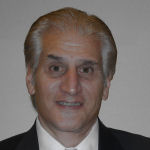
Dr. Louis Pelus
Louis M. Pelus, PhD, is a Professor of Microbiology and Immunology and Associate Director of the Walther Oncology Center, IU School of Medicine. He received his Masters and PhD from Rutgers.
Stem cell types include embryonic stem cells, which are pluripotent (capable of differentiating into any cell type). Tissue specific stem cells can only produce certain cells. For example, hematopoietic stem cells, HSC, only produce the various cells found in blood.

Cell Development
Stem cells can divide and give rise to other stem cells and form cells of specialized functions within the tissue or organ of residence. Stem cells form progenitor cells, which form precursor cells, which form mature cells that make up the body's organs.
When an egg is fertilized, it forms a zygote, then 2-, then 4-, then 8-celled embryos, then a morula and then a blastocyst. Embryonic stem cells can be harvested from the blastocyst, which some consider to be a person. The blastocyst is destroyed by the harvesting. Federal law limits the use of federal funds for embryonic stem cell research to several lines of embryonic stem cells that have been grown on embryonic fibroblasts from mice. The medium limits the use of such stem cells for human therapy.
If certain somatic cell types are treated with chemicals, they may be changed to induced pluripotent stem cells (iPS cells). However, there are problems with using the iPS cells and the most recent research indicates it is possible that they may never be ready for "prime time" clinical use.
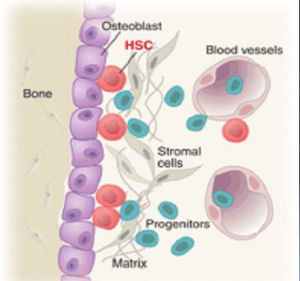
Stem Cells
The body must replace aged, injured of diseased cells. The turnover of cells that line the small intestine takes 3 to 5 days. The promise of stem cell research is to use pluripotent stem cells to produce whatever cells are needed for therapy. The difficulty is to obtain the production of the right cell.
Dr. Pelus's current research involves HSC stem cells that have the multipotentiality to produce the cells that make up our blood. The functionality of HSC is determined by the introduction of such cells in mice in competition with similar cells to see which cells reproduce more rapidly. As blood is formed in the bone marrow, the efficiency in which HSC populations home to the bone marrow is important.
Hematopoietic stem cell mobilization is the process of inducing release of blood-forming stem cells and progenitor cells from the marrow into the peripheral blood where they can be collected and used for a graft. If a patient's own HSC stem cells and progenitor cells can be collected from peripheral blood, they can be transplanted into the patient's bone marrow area after the bone marrow has been destroyed by radiation used to destroy cancer cells.
Dr. Pelus's latest research consists of using the drug meloxicam to increase the release of hematopoietic stem cells and progenitor cells from the blood marrow into the peripheral blood. This is an advance in treating cancer of the bone marrow.
Click HERE to view the Power Point slides used in this talk.
Notes by Malcolm and Joyce Mallette
Vol 88 No 4 - January 24, 2011
Zion National Park - In Depth
Presented By: Bill Stanley
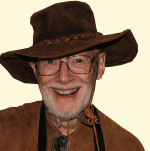
Bill Stanley
Our presenter today was Bill Stanley, chemical engineer (Cornell 48), adventure traveler/photographer, and Scientech webmaster extraordinaire. Bill has made several hiking trips to Zion National Park and focused his talk on some of the backcountry areas and hiking trails.
The Park is near the southwest corner of Utah with Bryce Canyon Nat Park 60 mi to the north and the Grand Canyon 80 mi to the south. Zion was designated a National Monument in 1909 and a National Park in 1918. The Kolob area to the northwest was appended in 1935.
The main entrance is from the south which is "guarded" by the imposing Watchman headland towering over the "placid" Virgin River which carved the canyon. The river carries out 3 million tons of rock and sediment per year (15 dump trucks per hour).

Great White
Throne
From the valley floor notable landmarks are Towers of the Virgin, Altar of Sacrifice, Court of the Patriarchs, the Pulpit and then the Great White Throne. These rock formations in Zion and the Kolob are part of the Grand Staircase, an immense sequence of sedimentary rock layers stretching from Bryce Canyon to the Grand Canyon.
The cliff forming Navajo sandstone is the dominant rock formation in the park. It is up to 2500 feet thick and formed from a shallow lake 175 thousand years ago. Water permeates the rock and weeps out the sides of the cliff as much as 1000-4000 years later!
Exploring the East Entrance Road, at the head of Pine Creek is the huge Great Arch, a closed arch 600 feet across and 400 feet high. On this road is the famous Checkerboard Mesa with vertical cracks cutting across cross-bedded sandstone.
Now on to the hiking tour: Hiking up the main canyon finds Lower Emerald Pool with a waterfall you walk behind and then half mile scramble to the Upper Pool. Next target is Observation Point a half mile nearly straight up, accessed with a series of switchbacks cut into the face of the rock. Bill recommends an alternate route via the East Entrance, which gives views of Mystery Canyon and Zion Canyon from above.

Angels Landing
Angels Landing was named by Mormon settlers claiming only angels could land there. The trail climbs to a saddle and then 1500 feet up from the valley, 2.5 miles each way. It goes through switchbacks blasted into the cliff face, then into the infamous Walter's Wiggles (21 tight switchbacks) to Scouts landing where the real climbing begins with chains for support. Then the trail gets a tad scary up a ridge a few feet wide and 1200 feet down on both sides.
The Narrows hike starts at the end of park road. The canyon is very narrow so that water can rise 25 feet in 15 minutes in a flash flood. Some parts barely see sunlight.

North Creek Subway
The Subway hike is up the Left Fork of North Creek about 20 miles from the main entrance. With "no established" trail and an initial descent 400 feet down to the valley floor, the hike is more demanding. Most of the hike is right in the stream itself. After traversing boulders and waterfalls, the rock walls close in over your head, hence "the Subway".
The last hike is the Kolob some 40 miles from the main entrance. The trail is well established along the Middle Fork of Taylor Creek. Sights include two Mormon cabins and towering sandstone cliffs on both sides. At the end are two stacked closed arches, one above the other, to highlight the final hike.
Click HERE to view the images used in this talk.
Notes by John Peer
Vol 88 No 5 - January 31, 2011
Indianapolis Coalition for Patient Safety
Presented By: Dr. Glenn Bingle
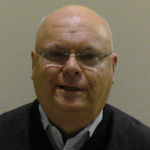
Dr. Glenn Bingle
Glenn Bingle, MD., PhD. F.A.C.P and chairman of the Indianapolis Coalition for Patient Safety provided an introduction and overview of his organization. HealthGrades reported that during 2001 - 2003 298,865 deaths in hospitals were due to patient safety incidents. Over the past few years a number of these deaths have become headline news, including the death of two babies at Methodist Hospital in 1996, and the death of Dennis Quaid and Kimberly Buffington's child due to a large dose of heparin at Cedars-Sinai Medical Center. Medical errors can occur in any size hospital, even those with high visibility for their care.
Dr. Bingle showed an interesting slide indicating that your chance of a death in a hospital is worse than mountain climbing or bungee jumping while such activities as driving and air travel are far less. Bottom line; one the most dangerous thing you can do affecting your life is being admitted to a hospital.
Because of these data, organizations such as The Committee on Quality of Health Care in America came out with their vision-centered recommendations for crossing the quality chasm: safe, effective, timely, patient centered, and equitable.
The Indianapolis Coalition for Patient Safety was formed in 2003. The organization developed a patient safety framework, i.e., Stakeholders Aligned, Just Culture; Engagement though Education, Team Work, and Raised Awareness. This framework was developed from other coalitions around the country who also belong to the USA Safety Collaborative.
The Indianapolis Coalition is composed of a CEO group, made up of the President/CEO of major health care systems within Marion County and an Executive Working Group made up of the Chief Nursing Officer and the Hospital Medical Director. Initiative Specific Subgroups are then formed from representatives from the hospitals that develop strategy, tactics, supporting documents, and implementation plans.
This inspired organization has the following corporate guidelines:
The Vision: Make Indianapolis (Indiana) and Suburbs the safest place to receive health care in the nation.
The Mission: Improve the safety of patients receiving healthcare in Indianapolis and surrounding communities.
The Strategy: Implement Evidence-Based Practices.
The Tactics: Build the infrastructure; measure outcomes.
In 2009, a report from the Rand Study on four sites showed that "Indianapolis is perhaps the best example of truly community-wide collaborative approach to improving patient safety in hospitals".
The Indianapolis Coalition has developed a number of programs over their history. One is a Patient Safety Cultural Survey to determine if the staff are getting the message about the need for safety. Another program is the Medication List Project. It has been proven that carrying a list of medications with you will dramatically improve your outcome when seen by a health care provider. In the local hospitals, only 12% of the employees carried this information with them when the project began; now, over 75% carry their medication list with them. The Coalition obtained marketing help from Starbucks for this project.
Another program of great interest to the hospitals is an HF Patient Readmission Prevention Initiative to reduce the rate of patient readmissions before 30 days. Along with this, the Coalition has been tracking and reporting Septicemia Mortality which has shown a significant downward trend between 2003 and 2008.
The Indianapolis Coalition under the leadership of Dr. Bingle and the key administrative stakeholders has shown a major step in improving medical safety. During this time, other coalitions have developed in Indiana as well.
With the leadership from this organization that establishes good and honest communications, health care will improve in Indiana.
Click HERE to view the Power Point slides used in this talk.
Notes by Hank Wolfla
Vol 88 No 6 - February 7, 2011
Industrial Agriculture and the Threat of Antimicrobial Resistance
Presented By: Dr. Stephen J. Jay
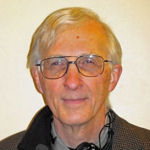
Dr. Stephen Jay
Dr. Jay is the Professor of Medicine and Public Health at the I. U. School of Medicine, Department of Public Health.
Are the institutions of higher learning in the U.S. adequately educating the youth of America in science and technology so that they can address or solve critical issues that are upon us and others that will develop in the future? Dr. C.M. Vest, former president of MIT, chaired a 5-year study which concluded these rankings in comparison with other industrial nations:
Globe Innovate/increase last decade 6th/40th
HS Grade -Industrial Nations 11th
College completion rate (25-34 yrs) 16th
Broadband internet access 22nd
% college degrees received-Sci/Eng 27nd
Quality K-12 Math/Science education 48th
Life Expectancy at birth 24th
One of these critical looming problem issues is the use of antibiotics (AB) in pharmacology as an animal growth- promoting procedure. Alex Fleming noted in 1945 that insufficient drug strength would lead to microbe drug resistance. The use of ABs inevitably leads to AB resistance, and overuse accelerates the process. Now we are seeing the existence of superbugs, eg. MRSA.
Most ABs are used for industrial food animal production, given to herds via daily feed and water for non-therapeutic purposes. Up to 70% of ABs in the U.S. are given to healthy animals. Many are from the same drug family as those ABs used in humans, e.g. penicillins, tetracyclines, and other AB classes. This is what makes the resistance generated in farm animals even more dangerous to humans. Widespread use of ABs for disease control and growth promotion in animals has been paralleled by an increase in the resistance in those bacteria (Salmonella and Campylobacter) that can spread from animals, often through food, to cause infections in humans. Bacteria resistance to ABs used on farms can infect humans by:
Eating/handling contaminated meat or produce.
Contact with farm or food workers who handle contaminated animals,
Contact with soil and water that has been polluted by animal waste.
The cost in the U.S. is billions of dollars each year. Children, elderly and chronically ill are particularly vulnerable. Any one can be at risk.
This problem has been known for 30-40 years. Now however nearly every major scientific organization has recognized the danger and is raising awareness for a change to phase out the use of ABs for non-therapeutic purposes in the agricultural industry.
As of 2010 the FDA, CDC and USDA all agree on the human hazards from the injudicious use of antibiotics in industrial farm animals.
What can we do?
Call/write your policy-maker in Indiana and Washington
Write letters to the Indianapolis Star editor
Raise the issue at local meetings
Share information.
Notes by Jim Bettner
Vol 88 No 7 - February 14, 2011
The Space Program - Everyone's Gain
Presented By: Scott Phillips, MD, FACS, FAAOA

Dr. Scott Phillips
Dr. Phillips is a graduate of Butler University and the Indiana University School of Medicine. He served our country in Desert Storm and has served on 18 space missions as a flight surgeon member of the Space Shot Rescue Team. He is certified in Ear Nose and Throat Surgery and Allergy.
There have been more than 130 missions into space under the NASA program. There are only three more missions left before the program is discontinued. The next flight is on February 24 with Discovery. The final flight will be in June with Atlantis. The space shuttle program was designed to build and service the International Space Station. Dr. Phillips is on the space rescue team. The insignia on their uniform indicates that they are members of the Department of Defense Manned Space Flight Support Office.
When there is a space flight takeoff or landing Dr. Phillips is on duty in a Black Hawk helicopter. There is one helicopter at the ready for each two astronauts on the flight. In addition, as a reserve officer in the United States Air Force, he also serves as a flight surgeon at the Grissom Air Force Base. The mission of the base is to provide refueling for aircraft in flight. In flight he is positioned next to the operator of the 18-foot tube that fuels the recipient aircraft usually traveling about 350 mph.
When on space flight rescue duty in Florida the Black Hawk helicopters are stationed about 3 miles from the launch pad. If there is a mishap and the crew must be rescued, there is a complex protocol which must be followed as to where the astronauts and the space vehicle may be approached and touched and how treatment may be administered. If the injuries are serious, arrangements have been made to evacuate the astronauts to nearby hospitals. After four minutes 3 seconds into the launch the space vehicle can no longer return to the Cape. After seven minutes 28 seconds they can no longer land and need to go around the earth one time which requires one hour 46 minutes. When the spaceship lands it comes in as a glider and has only one chance to land.
There have been more than 30,000 very beneficial spinoffs from the NASA space program.
Smoke detectors were originally developed for the Skylab mission. To provide extremely accurate timing, quartz crystals were developed for this purpose. LCD display technology was developed because it uses very little energy and battery weight had to be conserved. Light weight Mylar was developed as some protection against radiation. Metals with memory are important in spaceflight and have been used for eye glass frames, vascular clips and vascular stents. Barcodes were developed to keep track of the thousands of parts used in space missions. The joystick was developed to operate the Apollo lunar rover. In 1960 the weather satellite system was introduced and in 1961 satellite television.
Many medical innovations have been introduced from following issues first realized in space. Bone loss was noted in astronauts after a few days in space. This condition is referred to as osteoporosis and results when bone cells do not produce sufficient bone. Medicines developed to counteract this are now available including Fosamax. Advances in telemetry have resulted in many innovations in civilian life such as remote monitoring of electrical activity of the heart and even regulating pacemaker activity over the telephone. Advances in renal dialysis, desalination and drug research are among the many innovations.
Robotic surgery with the Da Vinci device is used in our community particularly for prostatic surgery but also for some complicated head and neck surgical procedures. Telemedicine is in common use today whereby specialty care can be offered to smaller communities which are too small to support a particular specialty. The list of innovations from the space program goes on and on. It has been suggested that billions of kilowatts of solar power could be produced on the moon and sent back to Earth via microwaves. A nuclear fusion reactor could also be placed on the moon to generate electricity.
Unfortunately because of funding issues no further moon landings are anticipated. The Russian Soyuz program will be transporting our astronauts back and forth from the international space Station in the coming years.
The website www.NASA.gov is the source of much additional information.
Click HERE to view the Power Point slides used in this talk.
Notes by Jerry Kurlander
Vol 88 No 8 - February 21, 2011
A History of Engineering Projects
Presented By: Jim Baize
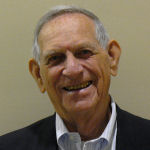
Jim Baize
Jim Baize has degrees in both Mechanical Engineering and Nuclear Engineering
Jim explained how a number of challenging projects during his life opened the door to a number of challenging businesses.
At age 13 he left his home with his grandparents to go out on his own. He took a job with Western Union delivering telegrams and living in a hotel.
At age 15, following the lead of a friend, he joined the Navy. He used subterfuge to get around his young age. He served in the Pacific campaigns including Iwo Jima after which he spent months in a hospital where he got his GED. He received a Purple Hear and 23 metals for his service. He attended Northwestern University where he received a degree in mechanical engineering in three years.
After several short terms a various jobs, not to his liking, he joined the Allison Division of GM and later was sent to Detroit. He was assigned to be a lobbyist in Washington, DC. While in Washington he made numerous contacts which opened the opportunity to many government contracts. For example, Allison received a contract to develop the first stage of a rocket engine.
He decided to put his experience and personal contacts to work for himself and went into business for himself. One of his first projects was to design some equipment to test aircraft engines. He moved on to a full service corporation. They would design, build, and finance projects.
The Alaskan Pipeline, several Alaskan Airports, Nuclear Power Plants, rotary engines, open heart surgery equipment, teleconferencing equipment, office buildings, etcetera.
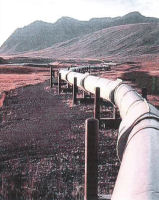
Alaska Pipeline
-

Pacific Nations Center
-
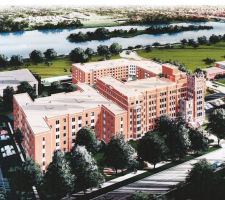
Mercy Apartments
-
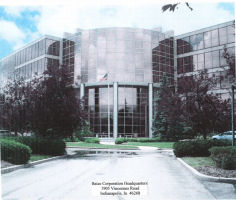
Baize Headquarters
Whenever there is a need the ability to design, build, and even finance is available.
Jim says it was a great life.
Notes by Charles W Hamm
Vol 88 No 9 - February 28, 2011
A History of the Indiana Central Canal
Presented By: J. Darrell Bakken, Emeritus Member, Scientech Club
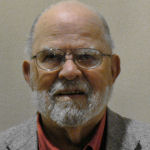
Darrell Bakken
Mr. Bakken spoke on the short history of the development of the canal from the 1800's.
Historically, the 1800's was a time of feverish activities which he termed a "brain disease" of state and local politicians. After New York completed the Erie Canal, the canal fever spread through Pennsylvania and Ohio to Indiana. The Wabash and Erie Canal was authorized in the mid -1820's and construction began at the Ohio/Indiana border. It was completed to Terra Haute by the 1840's and later to the Ohio River at Evansville. It included a connection to the extensive Ohio canal sysytem and constituted a viable transportation route through the 1870's.
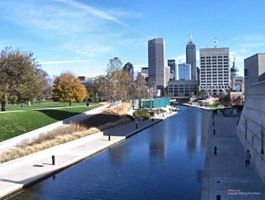
Central Canal Indianapolis
In 1835 a survey was made of a canal through central Indiana to run from the Wabash and Erie Canal at Peru through Indianapolis to rejoin the Wabash and Erie at Worthington. This Central Canal was authorized a year later by then Governor Noah Noble. On Oct. 1836, construction of the Broad Ripple dam and the Indianapolis segment of the Central Canal was begun. The funding was from a loan of up to $10 million dollars for 25 years at 5% interest. Yet, the state income at that time was less than $50,000 a year. By 1838, money had run out and construction of the Indianapolis section was stopped at Pleasant Run Creek. This part of the canal, 13 mile watered, was placed in service in June 27, 1839. This section was the only part of the total Central Canal that was completed.
Between 1830 and 1851, the State of Indiana owned the Central Canal and all the land beneath it. However, the maintenance cost was too high and there was hardly any income from it. The Governor and General Assembly sold it for $2,425 which was much less than the cost of construction of $435, 496.
In 1851, the Central Canal was sold to Indiana businessmen who then transferred the title to an unknown person in Rochester, N.Y.
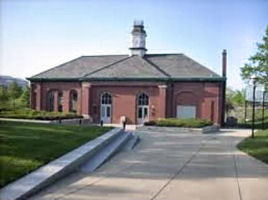
White River Pumphouse
Between 1851 and 1864 the canal was owned by the Central Canal Manufacturing, Hydraulic and Water Works Company. It was again sold in 1864 to the Central Canal Company of Rochester, N.Y. This new company proposed to start a Water Works Company in Indianapolis. They paid $502,669 for the Central Canal. Woodruff was named the first CEO of the company.
The company constructed the initial city public water system. Through 1880, the company spent $1.4 million for systems improvements. The company later declared bankruptcy and sold the canal to the Indianapolis Water Company for $500,000 in 1881.
The Indianapolis Central Canal initially offered waterwheels for power for some 38 businesses but dwindled to 6 using businesses by 1945. Some passenger boats provided excursions from downtown Indianapolis to Broad Ripple. By 1904, with the addition of the White River Treatment Plant, the canal was used to convey raw water from the White River at Broad Ripple to the new plant.
Click HERE to view the Power Point slides used in this talk.
Notes by Gonz Chua
Vol 88 No 10 - March 7, 2011
Just the Facts, Ma'am - A Global Warming Primer
Presented By: Dick Garrett
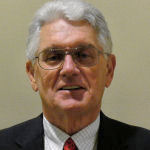
Dick Garrett
What we hear:
A group of scientists think the world is going to be dramatically changed because of man-made gasses.
Another group of scientists don't believe the above scientists.
Evil E-mails were "hacked" from an English University.
Temperature measurements were all messed up because of:
The "urban heat sink" problem.
Measurements in Siberia were left out.
There is no measurement of the temperature of the oceans.
Al Gore thinks we have a desperate problem that demands immediate attention (Al Gore made a number of false statements in his movie “Inconvenient Truths”).
Words are used like: swindle, blunder, greatest fraud ever perpetuated on the world. The world is really cooling.
What is the Intergovernmental Panel on Climate Change (IPCC) Position?
Greenhouse gasses are accumulating at a rapid rate leading to global surface warming by the year 2100 of from 1.52°C to 4.06°C (2.7° to 7.3°F) - best estimate 2.56°C (4.6°F). There is no appreciable natural long-term impact on our climate.
Consequences:
Sea level increases 0.43 meter (from thermal expansion and melting ice)
World will not warm in uniform way
More hot days over nearly all land areas
Higher minimum temps in winter
More intense precipitation events - 100-year storms become 20-year storms
More intense weather events
More droughts
Relative to the average over 1980-1999, sea level rose 20 cm in the 20th century.
For 2010, the combined global land and ocean surface temperature tied with 2005 as the warmest such period on record. The decade 2000-2009 was the warmest decade on record.
Analytical Modeling:
The analytical modeling of temperature change with time agrees fairly well with observed phenomenon when solar, ozone, volcanic, sulfate and greenhouse effects are taken into account.
Conclusions:
Global warming is clearly impacted by man - anthropogenic, but there are most likely natural events operating as well.
It is currently very uncertain as to the ultimate impact that the increased greenhouse gasses will have on global temperature.
The IPCC has dramatically overstated the impact of the temperature change. 1.5°C is probably closer to the truth.
Recommendation:
We should "hedge our bets" and go nuclear. It is more renewable - we need to be doing this anyway.
Click HERE to view the Power Point slides used in this talk.
Notes by Jim Bettner
Vol 88 No 11 - March 14, 2011
Design Concept of an Advanced Delta Wing Racing Car
Presented By: Ben Bolby, Ganassi Racing
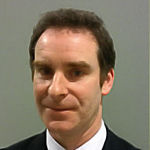
Ben Bolby
Mr. Bowlby is a race car designer who presently is the Technical Director of Ganassi Racing. He is an Englishman who previously worked for Lola Cars and he has worked in both the NASCAR and IndyCar divisions of Ganassi Racing. In this paper the term IndyCar is used to describe the type of cars raced at the Indianapolis 500.
Since 2006 a single standardized car has been used in IndyCar, which is a 2003 model made by Dallara. In 2009 the IndyCar authorities announced they would adopt a new car and invited proposals from racing car makers. Ganassi Racing decided to create a design for the competition, and to create a new concept of race management and promotion as well.
They saw several problems with IndyCar racing: TV audiences for the races have declined steadily since the 1970's; the cars are inefficient and consume a lot of energy, which is out of step with the times; the racing does not appeal to younger people; and the future of racing is not assured.
Therefore they decided that a drastic change in the car, not a mere updating, was needed. In keeping with automotive trends, they decided they must make a car lighter and more efficient than any present racing car. Further, they decided that its appearance must be striking, exciting and iconic, and the car must be safer than present cars. Further, the car must be relatively inexpensive to buy and maintain, and must improve the return on investment of all concerned.
Air resistance (drag) is a major consumer of power, and the exposed wheels of the present car create a great deal of drag. They decided to shield the wheels with "fenders," but had to preserve the appearance of an IndyCar, not a mere "sports car."
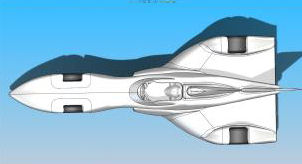
Top View
After weighing all these points and many more, they decided on a revolutionary design, a long delta shape with a narrow nose and no "wings" such as we see on all race cars. The new design is designed to result in:
*The Same High Speed (235 mph top speed in Indy trim)
*Half the Drag (less than a Toyota Prius)
*Half the Horsepower (325 BHP)
*Half the Weight (1030 pounds total with driver)
*Half the Fuel Requirement
*and Half the Cost
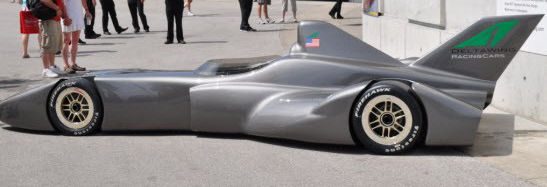
Delta Wing Race Car
The proposed design is intended to remove wake sensitive and vulnerable wing elements and enhance the on-track spectacle using shrouded wheels for drag reduction and safety without visually becoming a “sports car”.
However, the IndyCar and 500 officers decided to accept an updated car from Dallara.
Ganassi Racing also proposed a revolutionary method of regulating IndyCar racing, which they continue to advocate. Information science has taken up "open source" management, in which the maximum amount of information is publicly available for use by everyone. All racing now uses the opposite system of management, in which no information is publicly available and the racers must comply with extremely rigid specifications for the cars. Each racer spends heavily to devise ingenious improvements of his own which circumvent the specifications.
Ganassi's proposal is to publish all the data about the car on a website. Anyone is free to design improvements, subject to approval as safe, and prepare publication. Only parts which are approved, published on the website and made by an approved supplier may be raced. Thus, the car will improve and each racer can use all improvements.
Click HERE to view the Power Point slides used in this talk.
Notes by Joe Jones
Vol 88 No 12 - March 21, 2011
Wind and Seismic Structural Design of Buildings
Presented By: Rod McComas, P.E., S.E., SECB

Rod McComas
Mr. McComas is a structural engineer, and his company designs buildings and other structures of all kinds across the USA, and also determines the causes of failures of structures. His 20-year-old company has carried out more than 5000 projects.
The wind and seismic loads for which structures are designed are outlined in codes written by international and American engineering societies, as well as by a California seismic code. The wind velocity used in design is that which will be exceeded only by 2% over a 50-year period. The use of the structure also is considered-an agricultural building is not designed as severely as an apartment building.
The design wind speed in most of the USA is 90 mph, higher in coastal areas, up to 150 mph in south Florida. The wind speed is used to calculate the horizontal force on the walls of the building and the complex forces on the roof. Separate considerations apply to the building as a whole and to the roof and wall cladding.
Buildings are not routinely analyzed for tornado resistance, which is not required by the codes. When the builder asks for that analysis, the design wind speed across the tornado belt is 200 mph, less in the far west and the northeast. Mr. McComas surprised most of us by explaining that a building does not become more resistant to a tornado by losing its windows, as we had long thought, but is less resistant because the winds sweep through it.
Design for seismic forces is much more complex than design for wind forces. More than 50 equations are used in seismic calculations. Indiana is threatened by the New Madrid fault along the Mississippi in Arkansas and Missouri, and there is a seismic zone in the Wabash valley. The worst recorded earthquake in Indiana was a 5.1; it is estimated that the New Madrid quakes of 1811-12 were 7.7.
Earthquakes create horizontal forces (more rarely vertical ones) and the size, speed and duration of the movements cause the damage. The nature of the underlying rock and soil strongly affect both size and speed. A city on rock, like Memphis, would be much less damaged than one on stiff soil, like Carmel, by a given earthquake.
Seismic forces are likely to be much higher than wind forces. Of course, a building must be designed for both seismic forces and wind forces but not for both happening at once.
Ductility, the ability of the building, including the foundation, to flex and recover from a force, is very important in seismic designing. Special connectors are used to assemble a building in earthquake country, and the ductility of building components like wall panels is carefully considered.
All buildings move, and the engineer must accommodate its movements. Depending on the situation, a more or less stiff building may be called for. Bracing, which is usually inside the walls but may be on the exterior, is often used to stiffen the building to the desired degree. More flexible connectors may be used for the opposite purpose.
If the building probably will be under severe stresses, it may be isolated from the earth by springs or flexible cushions. Swaying of a tall building may be moderated by a very heavy pendulum within the top of the building.
Click HERE to view the Power Point slides used in this talk.
Notes by Joe Jones
Vol 88 No 13 - March 28, 2011
The Future of Indiana University Health
Presented By: Daniel F. Evans, Jr., President and CEO, Indiana University Health
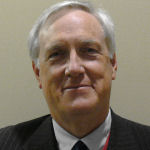
Daniel Evans
Mr. Evans is a 1976 graduate of the Indiana University School of Law. Before joining Clarian and Indiana University Health he was a partner in the law firm of Baker and Daniels. He is a member of many boards and chambers of commerce.
I.U.Health is a group of 19 hospitals and 500 facilities. Its mission is to improve health care of its patients through innovation, excellence in care, education, research and service. It is affiliated with the Indiana University School of Medicine which is the only medical school in Indiana and the second largest medical school in the United States with 1200 medical students. The Board of Directors of IU Health is made up of the Methodist Health Group of the United Methodist Church and the Board of Trustees of Indiana University. The Clarian name was recently changed after extensive market research. I.U.Health was chosen to convey the key attribute of a health care system which is deemed to be assurance of patients and referring physicians of high-quality care from top-rated providers.
Very careful records are kept using multiple parameters to evaluate performance against benchmarks. Efforts are made to be at or above the 95th percentile in comparison with other educational, research and patient care institutions.
Healthcare costs have been increasing faster than the gross domestic product (GDP) at least since 1960. In those years healthcare cost has grown from 5% to 15% of GDP. This rate of growth is unsustainable. Five percent of the US population accounts for 50% of healthcare spending. Ten percent of the population accounts for 65% of healthcare costs. Many health care problems are self-inflicted. These include smoking, obesity, inactivity, and excess alcohol. Life expectancy has been increasing dramatically over time. Many of the conditions commonly treated today did not have time to develop in the past, and no treatments such as newer drugs and surgeries were available. The current epidemic of chronic disease never had time to develop in past years. Healthcare costs, therefore, have been continuing to rise and are becoming unaffordable.
Many efforts are being made by business, industry and government to maintain these costs at a manageable growth rate. This is proving to be very difficult. The Obama health care law is an example of this but many of its features are proving to be near impossible for the states to institute. There will need to be modification of several provisions of the law. Currently the constitutionality of the insurance mandate is in question in U.S. District Courts; however, it is important that the insurance pool include the entire population.
New models of care to contain the rising costs are being developed and tried. These include payment for total management of a patient's health or a particular condition, careful patient compliance monitoring and outcomes research. That is, what works and what doesn't.
Click HERE to view the Power Point slides used in this talk.
Notes by Gerald Kurlander